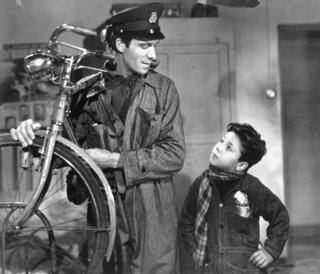 FLASHBACK TO THE 50s (PART III)
FLASHBACK TO THE 50s (PART III)New Delhi (1956)
The first ten minutes, and I begin to wonder if this film is not another Teen batti char raaste, that V. Shantaram production on national integration. Not that I have anything against "Teen Batti.....". On the contrary, it figures on my "to do" list of 50s movies that will appear shortly on this blog. But I don't want an encore on display, either.
Readers may have noticed that I've been intermittently blogging on black and white movies of the 50s. I chose Bollywood, because as a brand it has, like Khadi Gram Udyog and Lifebuoy, remained unchanged over generations. In other words, it is what is called rock solid dependable. No matter what the assortment or order, one can be assured that the blend of love, tragedy, melody and violence will, at the very least, deliver huge comic relief. Where in the world can the heroine's bachao bacho peacefully coexist with the hero's Maa ka ashirwad , behen ka mandatory meri izzat par haat lagaya to mein jaan de doongi and the love interest's compulsory item number that necessitates a chilly winter to sarkaye leo the khatiya.
When it comes to fumbling and bumbling in collage making, Bollywood wins hands down.
So as I was saying, in the course of picking films for the 50s list (suggestions welcome!!) realization suddenly dawns that what I have at hand is essentially an exhibition of exercises in lachrymal training!! So I step back, and pick the odd Kishore Kumar, the odd Shantaram and the odd this and that (thanks are due to Van Pelt Library). And that's how I landed New Delhi.
A few more minutes into the film (after the first ten) and my pick is not so bad after all. For one, the overabundance of cultural integration that was Teen Batti... is severely curtailed. Instead of the ambitious cultural merger across the subcontinent we are mercifully subjected to a smaller goal of achieving unity only in the northie-southie context. In other words, we are left with the Madrasi (this is 50s India, when the south of the Vindhyas was Madrasi territory) and the Punjabi. And what better than the nuptial knot to unite cultures!
So there's Anand (Kishore Kumar), a Punjabi from Jullunder who has to pose as a Madrasi to get an accommodation in the capital city. So provincial are the landlords here, that they look for renters from their own community, prompting Anand to ask yeh hindustan kahan hain and burst into an appropriate song extolling the virtues of the greater homeland.
Through his new Madrasi connections, Anand meets classical music teacher Janaki (Vyjayanthimala). Now with Vyjayanthimala around, can dance be far behind. So she becomes a song and dance teacher. (A word about the dances. They are simply divine.) But no sooner does their romance begin that Anand's father Lala Daulatram (Nasir Hussein) is transferred into the city. Comic scenes follow as Janaki's father wishes to meet him and Anand seeks the help of their gluttonous Madrasi servant in the masquerade. Soon he is caught red handed and in the me lee that ensues, Janaki tries to commit suicide by jumping off into a river (after uttering the stipulated number of nehi nehi-s).
In the city resides another Punjabi gentleman, a Sahukar who loves Janaki as his own daughter. He saves her in the nick of time, drills some sense into her head (if that's possible) and introduces her into society as his niece. A big black mole on her cheek, a salwar kameez-dupatta-paranda instead of kanjeevaram-pottu-flowers, the aiaiohh replaced with ithe-uthe (she even dances a bhangra pale) and she is so convincing that Lala Daulatram accepts her hand for his son. Mrs. Daulatram, too, is also going vari jaaon over her.
In a parallel plot, the Bengali angle is brought in (what after all is national integration if one leaves out the Bong) as Anand's sister falls in love with painter, Ashok Banerjee. Obviously, Daulatram would hear nothing of such an union and promptly arranges his daughter's wedding to a boy from his biradari. Just as the wedding is about to begin, the boy's family shows their true colors and demands a huge dowry. In contrast to their meanness (they also kick Daulatram-ji's pagri which in a mandatory beti ka baap scene he has dutifully deposited at the groom's father's feet) Banerjee, the bong, is an epitome of sainthood. He steps in to offer his wealth to get his beloved married to another man. And not just any wealth mind you, it's his dead mother's jewelery left for his to-be wife. (Oh! how I love Bollywood's penchant for spelling things out loud and clear just so that the audience is spared from exerting their pea sized brain that can be put toward more useful pursuits elsewhere. Thus the dead mother's jewels, in case you had a wee bit of doubt about Bong babu's kind soul.) Teary eyed, Daulatram is finally brought to his senses. The two pairs of love birds are united and the day is saved for cultural integration.
Despite the tried and tested portrayals and the standard dialogues, there are some funny and wonderfully comic moments in the film. Especially in the scenes involving disguise; Kishore Kumar as a Madrasi, his servant posing as his Madrasi father and Vyjayanthimala as a Punjaban. Needless to add, Kishore Kumar's comic timing is great even in the songs. The highlight song of the film is Nakhrewali where he appears in a Fred Astaire like look complete with hat and cane.




